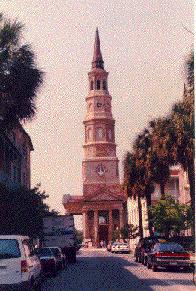 |
Vincent Scully's American Architecture and Urbanism is a panoramic look at the history of our environment.
While tracing the development of the typical American house as well as noted landmarks, he identifies a basic characteristic common to our efforts to shape our surroundings. Separated physically from the older, established world, Americans developed a “distrust of place and precedent” appropriate for a nation of immigrants. The spirit of this new society came from transforming memories of communal life, into forms and images stressing mobility and change.
Scully's first examples of this transformation are the colonial cities of New Mexico and New England. Adapting to local materials and climate, the early
settlers stripped down the mother land’s traditions, speeding up and intensifying the making of new cities. The use of the grid pattern of streets quickly defined the limits of the territory and created an ordered and complete settlement in the wilderness. The “perfect, precise, puristic” boxes of colonial homes echoed the geometric order - rigid and elemental forms not of the land, but defining man's place in it.
After the Revolution, architects began to find shapes appropriate for the nation’s lofty ideals. Scully believes Jefferson's design for the University of Virginia is a sublime example fusing Classical imagery with the horizontality of the American landscape. The quad was a "structure of free nature, cultivated land, and human law
and order. . . so subtle and complete." This same vision accompanied the westward expansion as the grid was extended across Mississippi, taming the vastness of the Great Plains.
Olmsted and Downing’s efforts to create an romantic counterpoint to the rational grid helped the Picturesque style capture the American imagination in the mid 19th century. The drama and visual delight of Olmsted’s Central Park encouraged the variety and eclecticism of that age. Scully notes how the emerging technol
ogy of mass production and the adaptability of the balloon frame further encouraged the freedom to experiment with new styles and forms. By the last half of the 19th century, the exploding growth of new wood construction offered a way out of the teeming city and into the countryside - cementing the importance of the single family home.
|
 |
The growing separation between city and suburb was sharply defined in the early decades of the 20th century. At first, the Beaux Arts movement reinforced the
primacy of urban life. Casting back to Classical models, the new City Beautiful sprouted skyscrapers, grand public buildings and extensive master plans, raising urban form to a vast new scale. After the Depression, however, the city was seen as dangerously crowded and diseased. Inspired by Le Corbusier’s plan for Paris, planners believed the way to cure the city’s ills was to destroy it altogether, replacing the “messy vitality of its streets” with singular towers in a continuous green landscape. Wright’s Broadacre City was one example - an agrarian community for the middle class promising freedom of movement and lifestyle on your own acre of land. As Scully notes, Wright’s ideal vision was “a perfect cityless, endlessly suburbanized world.”
The diagram of the city in a garden found resonance with American architects in the Fifties and Sixties. Applying its form to everything regardless of program, buildings became “packages” - images of the client’s or architect’s individual style, wholly unrelated to its surroundings. Scully believes this mania for urban redevelopment neglects the importance changes over time have brought to a place. Scully shows America does have a history of architecture and urbanism just as varied and complex as other cultures. At the end, Scully offers a hopeful note, citing the works of Kahn and Venturi who he believes represent a new wave in architecture. He sees a spirit of “accommodation” in their work, acknowledging the “messy vitality” of cities while “continuing the dialogue between generations creating environments across time.” Thirty years later after the publication of this book, we still are trying to continue the conversation.
|